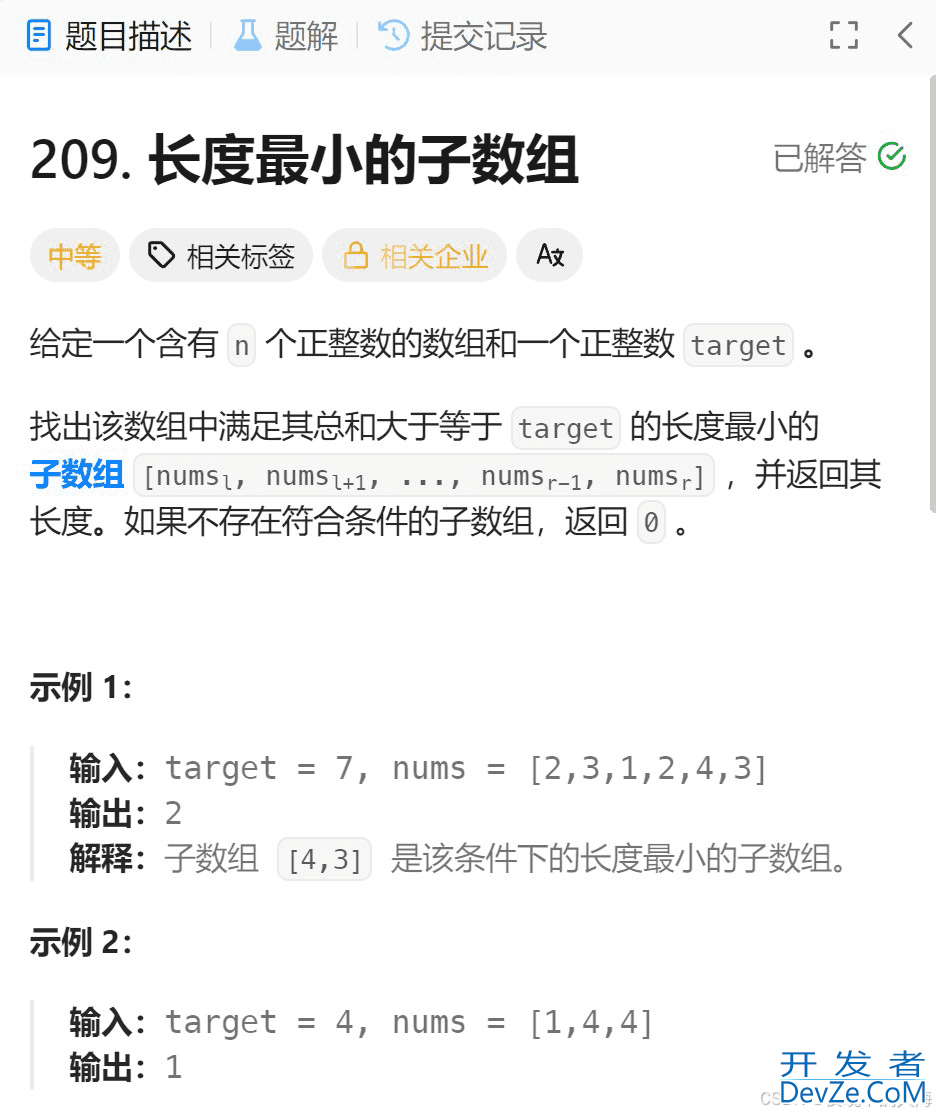JAVA8 Stream流中的reduce()方法详解
目录
- reduce()简介
- reduce三个override的方法
- 公共集合
reduce()简介
Reduce原意:减少,缩小- 根据指定的计算模型将Stream中的值计算得到一个最终结果
解释:reduce 操作可以实现从Stream中生成一个值,其生成的值不是随意的,而是根据指定的计算模型。比如,之前提到count、min和max方法,因为常用而被纳入标准库中。事实上,这些方法都是reduce操作。
reduce三个override的方法
reduce方法有三个override的方法:
Optional<T> reduce(BinaryOperator<T> accumulator);
T reduce(T identity, BinaryOperator<T> accuandroidmulator);
<U> U reduce(U identity,
BiFunction<U, ? super T, U> accumulator,
BinaryOperator<U> combiner);
公共集合
测试代码中的所有集合,都是该集合。
List<Person> JavaProgrammers = new ArrayList<Person>() {
{
add(new Person("Elsdon", "Jaycob", "Java programmer", "male", 2000, 18));
编程客栈 add(new Person("Tamsen", "Brittany", "Java programmer", "female", 2371, 55));
add(new Person("Floyd", "Donny", "Java programmer", "male", 3322, 25));
add(new Person("Sindy", "Jonie", "Java programmer", "female", 35020, 15));
add(new Person("Vere", "Hervey", "Java programmer", "male", 2272, 25));
add(new Person("Maude", "Jaimie", "Java programmer", "female", 2057, 87));
add(new Person("Shawn", "Randall", "Java programmer", "male", 3120, 99));
add(new Person("Jayden", "Corrina", "Java programmer", "female", 345, 25));
add(new Person("Palmer", "Dene", "Java programmer", "male", 3375, 14));
add(new Person("Addison", "Pam", "Java programmer", "female", 3426, 20));
}
};
方式一reduce(BinaryOperator accumulator)
Optional<T> reduce(BinaryOperator<T> accumulator);
BinaryOperator<T>,BinaryOperator源码:
public interface BinaryOperator<T> extends BiFunction<T,T,T> {
public static <T> BinaryOperator<T> minBy(Comparator<? super T> comparator) {
Objects.requireNonNull(comparator);
return (a, b) -> comparator.comparjavascripte(a, b) <= 0 ? a : b;
}
public static <T> BinaryOperator<T> maxBy(Comparator<? super T> comparator) {
Objects.requireNonNull(comparator);
return (a, b) -> comparator.compare(a, b) >= 0 ? a : b;
}
}
看BinaryOperator接口源码,我们可以看到,它又继承了BiFunction<T,T,T>.
BinaryOperator接口中又定义了另个静态方法为minBy和maxBy,上面我们提到BinaryOperator接口继承了BiFunction<T,T,T>,我们看一下BiFunction<T,T,T>源码:
@FunctionalInterface
public interface BiFunction<T, U, R> {
R apply(T t, U u);//接收两个参数 t 和 u, 返回 R
}
Bifunction中有一个apply方法,接收两个参数,返回一个结果
@FunctionalInterface注解,因此reduce(BinaryOperator<T> accumulator)方法需要一个函数式接口参数,该函数式接口需要两个参数,返回一个结果(reduce中返回的结果会作为下次累加器计算的第一个参数),也就是累加器,最终得到一个Optional对象
测试示例代码:
@Test
public void Test() {
int asInt = javaProgrammers.stream()
.mapToInt(Person::getSalary)//返回数值流,减少拆箱封箱操作,避免占用内存 IntStream
.reduce((x, y) -> x += y)// int
.getAsInt(); //return int
System.out.printf("方式一 reduce(BinaryOperator<T> accumulator) 求薪资测试结果:"+asInt);
/*解析:
1. reduce(BinaryOperator<T> accumulator) reduce方法接受一个函数,这个函数有两个参数
2. 第一个参数是上次函数执行的返回值(也称为中间结果),第二个参数是stream中的元素,这个函数把这两个值相加,得到的和会被赋值给下次执行这个函数的第一个参数
*注意:
1.第一次执行的时候第一个参数的值是Stream的第一个元素,第二个参数是Stream的第二个元素
2.方法返回值类型是Optional
*/
}
方式二reduce(T identity, BinaryOperator accumulator) T reduce(T identity, BinaryOperator<T> accumulator);
BinaryOperator函数接口,不同的是其会接受一个identity参数,identity参数与Stream中数据同类型,相当于一个的初始值,通过累加器accumulator迭代计算Stream中的数据,得到一个跟Stream中数据相同类型的最终结果。测试示例代码:
@Test
public void test1(){
int reduce = javaProgrammers.stream().mapToInt(Person::getSalary).reduce(10000, (x, y) -> x += y);
System.out.printf("方式二 reduce(T identity, BinaryOperator<T> accumulator) 求薪资测试结果:"+reduce);
/*注意:
* 1.与方式一相比设置了累加器的初始值,参数一(x)则不再是Stream中的第一个数据而是设置的初始值(10000)其他相同
*/
}
打印结果:
方式一 reduce(BinaryOperator<T> accumulator) 求薪资测试结果:57308
方式二 reduce(T identity, BinaryOperator<T> accumulator) 求薪资测试结果:67308 //初始值10000
方式三 reduce(U identity,BiFunction<U, ? super T, U> accumulator,BinaryOperator<U> combiner)
\<U\> U reduce(U identity,BiFunction\<U, ? super T, U\> accumulator,BinaryOperator\<U\> combiner);
1. 第一个参数:返回实例u,传递你要返回的U类型对象的初始化实例u
&编程客栈nbsp; 2. 第二个参数:累加器accumulator,可以使用lambda表达式,声明你在u上累加你的数据来源t的逻辑,例如(u,t)->u.sum(t),此时lambda表达式的行参列表是返回实例u和遍历的集合元素t,函数体是在u上累加t
3. 第三个参数:参数组合器combiner,接受lambda表达式。
根据参数我们一步一步分析代码示例:
@Test
public void test2() {
ArrayList<Integer> accResult_ = Stream.of(1, 2, 3, 4)
//第一个参数,初始值为ArrayList
.reduce(new ArrayList<Integer>(),
//第二个参数,实现了BiFunction函数式接口中apply方法,并且打印BiFunction
new BiFunction<ArrayList<Integer>, Integer, ArrayList<Integer>>() {
@Override
public ArrayList<Integer> apply(ArrayList<Integer> acc, Integer item) {
acc.add(item);
System.out.println("item: " + item);
System.out.println("acc+ : " + acc);
System.out.println("BiFunction");
return acc;
}
//第三个参数---参数的数据类型必须为返回数据类型,改参数主要用于合并多个线程的result值
// (Stream是支持并发操作的,为了避免竞争,对于reduce线程都会有独立的result)
}, new BinaryOperator<ArrayList<Integer>>() {
@Override
public ArrayList<Integer> apply(ArrayList<Integer> acc, ArrayList<Integer> it开发者_JAVA入门em) {
System.out.println("BinaryOperator");
acc.addAll(item);
System.out.println("item: " + item);
System.out.println("acc+ : " + acc);
System.out.println("--------");
return acc;
}
});
System.out.println("accResult_: " + accResult_);
System.out.println("------------------lambda优化代码-----------------");
ArrayList<Integer> newList = new ArrayList<>();
ArrayList<Integer> accResult_s = Stream.of(1,2,3,4)
.reduce(newList,
(acc, item) -> {
acc.add(item);
编程客栈System.out.println("item: " + item);
System.out.println("acc+ : " + acc);
System.out.println("BiFunction");
return acc;
}, (acc, item) -> null);
System.out.println("accResult_s: " + accResult_s);
}
示例代码中,第一个参数是ArrayList,在第二个函数参数中打印了“BiFunction”,而在第三个参数接口中打印了函数接口中打印了”BinaryOperator“.看下面的打印结果,只打印了“BiFunction”,而没有打印”BinaryOperator“,也就是说第三个函数参数并没有执行。分析参数时我们知道了该变形可以返回任意类型的数据。
这是因为Stream是支持并发操作的,为了避免竞争,对于reduce线程都会有独立的result,combiner的作用在于合并每个线程的result得到最终结果。这也说明了了第三个函数参数的数据类型必须为返回数据类型了。
java8新特性之stream流中reduce()求和知识总结
打印结果:
item: 1
acc+ : [1]BiFunctionitem: 2acc+ : [1, 2]BiFunctionitem: 3acc+ : [1, 2, 3]BiFunctionitem: 4acc+ : [1, 2, 3, 4]BiFunction
另外需要注意:因为第三个参数用来处理并发操作,如何处理数据的重复性,应多做考虑,否则会出现重复数据!
到此这篇关于JAVA8 Stream流中的reduce()方法详解的文章就介绍到这了,更多相关JAVA8 Stream reduce()方法内容请搜索我们以前的文章或继续浏览下面的相关文章希望大家以后多多支持我们!






 加载中,请稍侯......
加载中,请稍侯......
精彩评论